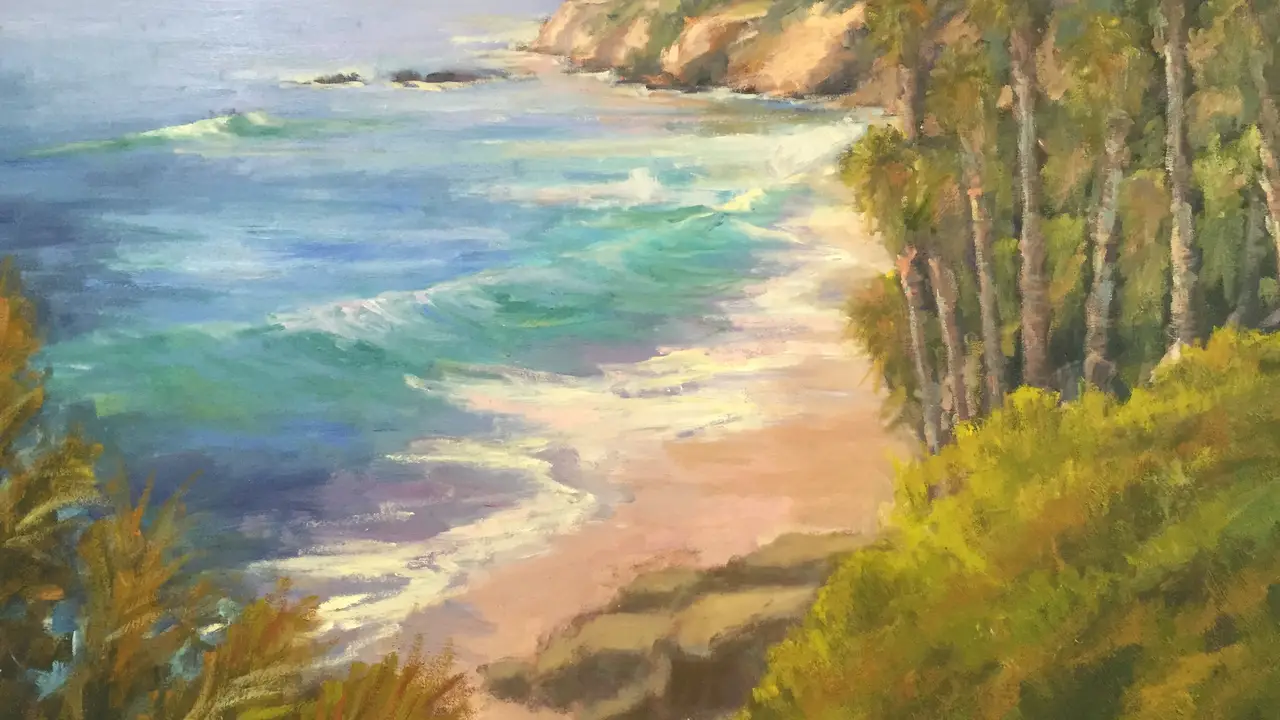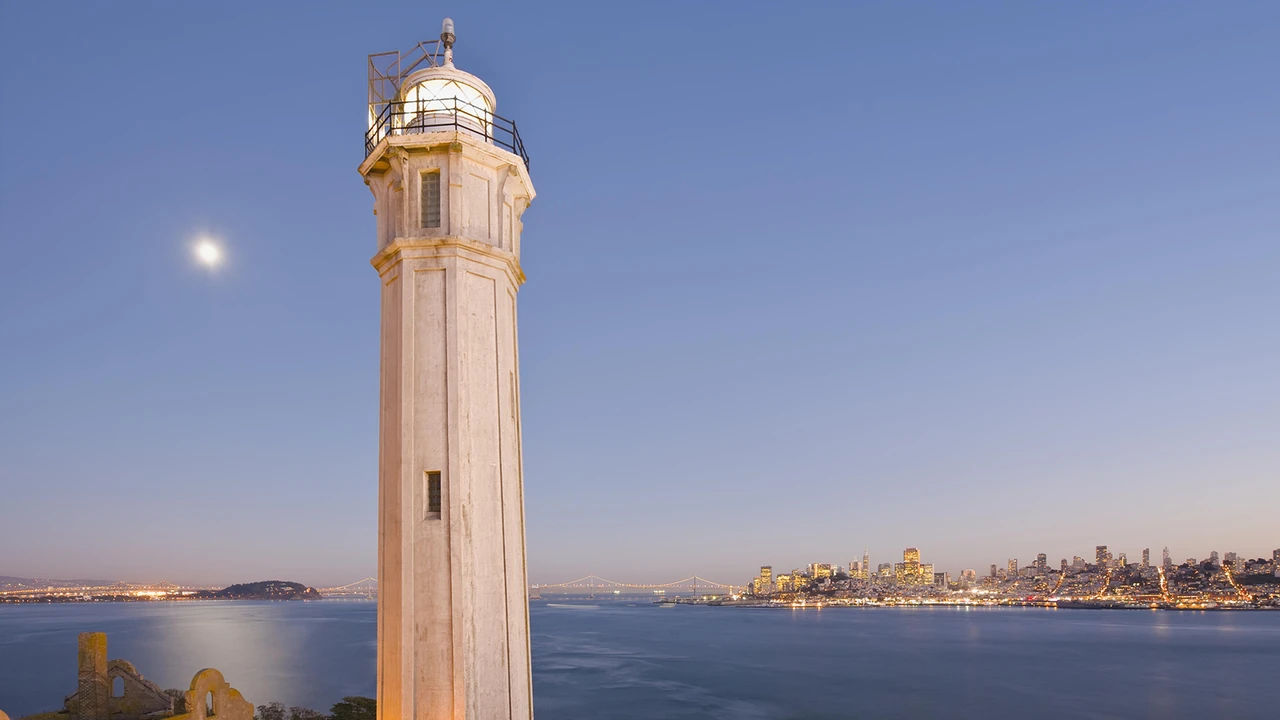Coastal Art_ Inspiration from the California Coast

The California coastline stretches for over 840 miles, a tapestry of rugged cliffs, sandy beaches, and vibrant ecosystems. For centuries, this dramatic landscape has served as a muse for artists of all kinds. From the sweeping vistas of Big Sur to the sun-drenched shores of Southern California, the coast offers endless inspiration for painters, photographers, sculptors, and more. Let's dive into the world of coastal art and explore how the California Coast fuels creativity.
Understanding the Allure of California Coastal Art
What is it about the California coast that captivates artists? It's more than just pretty scenery. It's the ever-changing light, the raw power of the ocean, the delicate balance of nature, and the sense of freedom that permeates the air. The coast evokes a range of emotions, from awe and wonder to peace and tranquility. Artists strive to capture these feelings and translate them into their work.
Consider the work of impressionist painters like William Wendt, often called the "Dean of Southern California Art." His landscapes captured the golden light and rolling hills of the region, influencing generations of California artists. Or think of the bold, colorful seascapes of contemporary artists like Erin Hanson, who uses a technique she calls "open impressionism" to convey the energy and vibrancy of the coast. These artists, and countless others, demonstrate the enduring appeal of the California coast as a subject for art.
Painting the California Coast: Techniques and Mediums
Painting the California coast presents unique challenges and opportunities. The constantly changing conditions – the shifting light, the crashing waves, the salty air – demand adaptability and skill. Artists employ a variety of techniques and mediums to capture the essence of the coast.
Oil Painting: A classic choice for landscape painting, oil paints offer rich colors, versatility, and the ability to create depth and texture. Oil paints allow artists to capture the subtle nuances of light and shadow, and to build up layers of paint to create a sense of realism or abstraction. For example, the Bob Ross Master Paint Set is a great starting point for beginners, providing a range of oil paints, brushes, and mediums. It's priced around $70 and offers excellent value for aspiring artists.
Acrylic Painting: Acrylics are a popular choice for their fast-drying time, vibrant colors, and water-based cleanup. They are a versatile medium that can be used for both realistic and abstract paintings. Acrylics are also more forgiving than oils, making them a good choice for beginners. Consider the Liquitex BASICS Acrylic Paint Set, a student-grade paint set that provides a wide range of colors at an affordable price (around $40). For a higher quality option, the Golden Artist Colors Fluid Acrylics offer exceptional pigment load and flow, ideal for detailed work and glazing (prices vary depending on color and size).
Watercolor Painting: Watercolors are known for their delicate washes, transparent colors, and luminous effects. They are a challenging but rewarding medium for capturing the atmospheric conditions of the coast. Watercolor painting requires a light touch and a good understanding of color mixing. The Winsor & Newton Cotman Water Colour Paint Sketchers' Pocket Box is a convenient and portable set for plein air painting (around $30). For professional-grade watercolors, the Daniel Smith Extra Fine Watercolors offer unparalleled vibrancy and lightfastness (individual tubes range from $15-$30).
Pastels: Pastels are a dry medium that offers rich colors, soft textures, and the ability to create painterly effects. They are a good choice for capturing the fleeting light and atmospheric conditions of the coast. Pastels require a textured surface to adhere to, such as sanded paper or pastel board. The Sennelier Soft Pastels are renowned for their buttery texture and intense colors (sets range from $50 to $500 depending on size and selection). For a more affordable option, the Prismacolor NuPastel Color Sticks offer good color range and blendability (around $30 for a set of 96).
Capturing Coastal Photography: Equipment and Techniques
Photography is another powerful medium for capturing the beauty of the California coast. From sweeping landscapes to intimate portraits of marine life, photography allows us to see the coast in new and compelling ways.
Cameras: The choice of camera depends on your skill level and budget. A DSLR or mirrorless camera offers the most flexibility and control, allowing you to adjust settings like aperture, shutter speed, and ISO. The Canon EOS Rebel T7 is a great entry-level DSLR (around $450 with kit lens), while the Sony Alpha a6000 is a popular mirrorless option (around $600 with kit lens). For serious photographers, the Sony Alpha a7 III (around $2000 body only) offers exceptional image quality and performance. Smartphone cameras have also improved dramatically in recent years, and can be a good option for casual photography. The iPhone 13 Pro and Samsung Galaxy S22 Ultra offer impressive camera systems with wide-angle, telephoto, and macro capabilities.
Lenses: A variety of lenses are useful for coastal photography. A wide-angle lens (e.g., 16-35mm) is ideal for capturing sweeping landscapes and dramatic seascapes. A telephoto lens (e.g., 70-200mm or longer) is useful for capturing distant subjects, such as wildlife or surfers. A standard zoom lens (e.g., 24-70mm) is a versatile option for a variety of subjects. Canon's EF 16-35mm f/2.8L III USM Lens (around $2200) is a top-of-the-line wide-angle lens for Canon DSLRs. The Sony FE 24-70mm f/2.8 GM Lens (around $2200) is a comparable option for Sony mirrorless cameras.
Tripods: A tripod is essential for sharp images, especially in low light or when using slow shutter speeds. A sturdy tripod will help you avoid camera shake and ensure that your images are crisp and clear. The Manfrotto Befree Advanced Travel Tripod is a lightweight and portable option (around $200), while the Gitzo GT2545T Series 2 Traveler Tripod is a more robust and professional-grade choice (around $800).
Filters: Filters can enhance your coastal photography in a variety of ways. A polarizing filter reduces glare and reflections, deepens colors, and enhances contrast. A neutral density (ND) filter reduces the amount of light entering the camera, allowing you to use slower shutter speeds for motion blur effects. A graduated neutral density (GND) filter balances the exposure between the sky and the land, preventing the sky from being overexposed. The B+W XS-Pro Digital MRC Nano Polarizing Filter is a high-quality polarizing filter (prices vary depending on size). The Lee Filters ND Grad Set is a popular choice for graduated neutral density filters (around $300).
Sculpting the Coast: Materials and Techniques
The California coast also inspires sculptors to create works that reflect the power and beauty of the ocean. From driftwood sculptures to monumental public art installations, the coast provides a wealth of materials and inspiration.
Driftwood Sculpture: Driftwood is a readily available material on many California beaches. Sculptors can use driftwood to create a variety of forms, from abstract shapes to figurative sculptures. Driftwood sculptures often incorporate the natural textures and shapes of the wood, creating a sense of organic beauty. Artists like Deborah Butterfield, known for her horse sculptures, often use found materials like driftwood to create their works.
Stone Carving: Stone is a durable and timeless material for sculpture. Coastal rock formations can provide inspiration for sculptors, who can use stone carving techniques to create works that reflect the geological history of the coast. Marble, granite, and sandstone are all common materials for stone sculpture. The Trow & Holden Hand Tools are highly regarded for stone carving (prices vary depending on the tool). For power carving, the Arbortech Power Carving Unit offers versatility and control (around $300).
Metal Sculpture: Metal is a versatile material that can be used to create a variety of sculptural forms. Coastal metal sculptures often incorporate themes of the ocean, such as waves, marine life, and boats. Stainless steel, bronze, and aluminum are all common materials for metal sculpture. Welding equipment is essential for metal sculpture. The Lincoln Electric POWER MIG 210MP Multi-Process Welder is a versatile and user-friendly option (around $1200). For cutting metal, the Milwaukee M18 FUEL Metal Cutting Circular Saw offers power and portability (around $400).
Clay Sculpture: Clay is a versatile and forgiving material that is well-suited for exploring organic forms and textures. Sculptors can use clay to create both figurative and abstract sculptures inspired by the California coast. The Shimpo VL-Lite Pottery Wheel is a popular choice for ceramic artists (around $800). For firing clay sculptures, the Skutt Kilns are known for their reliability and performance (prices vary depending on size and features).
Coastal Art and Environmental Awareness
Coastal art can play a powerful role in raising awareness about environmental issues facing the California coast. Artists can use their work to highlight the impacts of climate change, pollution, and habitat loss, and to inspire action to protect the coast for future generations.
Upcycled Art: Artists are increasingly using recycled and upcycled materials to create art that addresses environmental concerns. Plastic debris, discarded fishing nets, and other waste materials can be transformed into beautiful and thought-provoking sculptures and installations. Artists like Aurora Robson create stunning sculptures from discarded plastic bottles, highlighting the problem of plastic pollution in the ocean.
Land Art: Land art is an art movement that uses the natural landscape as its medium. Coastal land art projects can involve creating temporary or permanent installations on beaches, cliffs, or in the ocean. These projects can raise awareness about the fragility of the coastal environment and the importance of conservation. Andy Goldsworthy is a renowned land artist who creates ephemeral sculptures from natural materials.
Documentary Photography: Documentary photography can be a powerful tool for documenting the environmental challenges facing the California coast. Photographers can capture images of polluted beaches, eroding coastlines, and endangered species, raising awareness about these issues and inspiring action. Chris Jordan is a photographer who uses his work to document the impact of consumerism on the environment.
Finding Inspiration Along the California Coast: Specific Locations
The California coast offers a diverse range of locations that can inspire artists. Here are a few specific locations to consider:
Big Sur: The dramatic cliffs, redwood forests, and crashing waves of Big Sur have inspired artists for generations. The rugged beauty of this region is unparalleled. Consider visiting Pfeiffer Big Sur State Park, Bixby Bridge, and McWay Falls for stunning views.
Monterey Bay: The Monterey Bay Aquarium is a world-renowned aquarium that showcases the marine life of the California coast. The aquarium can provide inspiration for artists interested in painting or sculpting marine animals. The 17-Mile Drive offers stunning coastal views and access to Pebble Beach.
Carmel-by-the-Sea: Carmel-by-the-Sea is a charming town known for its art galleries and studios. The town's picturesque beaches and cypress trees provide inspiration for artists. Visit Carmel Mission, Point Lobos State Natural Reserve, and the numerous art galleries in town.
Santa Barbara: Santa Barbara is a beautiful city with a rich history and vibrant art scene. The city's Spanish architecture, beaches, and mountains provide inspiration for artists. Visit the Santa Barbara Mission, Stearns Wharf, and the Santa Barbara Museum of Art.
Laguna Beach: Laguna Beach is a coastal town known for its art festivals and galleries. The town's dramatic cliffs, tide pools, and beaches provide inspiration for artists. Visit the Pageant of the Masters, the Sawdust Art Festival, and the numerous beaches and coves along the coast.
San Diego: San Diego is a vibrant city with a diverse range of landscapes, from beaches to mountains to deserts. The city's beaches, parks, and museums provide inspiration for artists. Visit Balboa Park, the San Diego Zoo, and the numerous beaches along the coast.
Products to Enhance Your Coastal Art Experience
Here are some specific product recommendations to help you create your own coastal art:
For Painting:
- Easel: The Blick Studio Wooden H-Frame Easel is a sturdy and adjustable easel suitable for both studio and plein air painting (around $150).
- Palette: The New Wave Posh Glass Palette is a durable and easy-to-clean palette for mixing paints (around $50).
- Brushes: The Princeton Velvetouch Series 3950 Brushes are a versatile set of synthetic brushes suitable for a variety of painting techniques (around $40).
For Photography:
- Camera Bag: The Peak Design Everyday Backpack is a versatile and stylish camera bag that can accommodate a camera, lenses, and other accessories (around $300).
- Memory Cards: The SanDisk Extreme PRO SD Card is a fast and reliable memory card for storing your photos and videos (prices vary depending on capacity).
- Cleaning Kit: The LensPen Lens Cleaner is a safe and effective way to clean your camera lenses (around $15).
For Sculpture:
- Clay Tools: The Kemper Tools Pottery Tool Set is a comprehensive set of tools for working with clay (around $50).
- Welding Helmet: The Lincoln Electric Viking 3350 Welding Helmet provides excellent protection and visibility for welding (around $300).
- Safety Glasses: The Pyramex I-Force Slim Safety Glasses provide eye protection for a variety of art-making activities (around $10).
Comparing Coastal Art Supplies: Making the Right Choice
Choosing the right art supplies can be overwhelming, especially with so many options available. Here's a comparison of some popular choices:
Oil Paints vs. Acrylic Paints: Oil paints offer richer colors and longer drying times, allowing for more blending and manipulation. Acrylic paints dry quickly and are water-based, making them easier to clean up. Oil paints require solvents for cleaning, which can be harmful to the environment. Acrylic paints are a more environmentally friendly option.
DSLR Cameras vs. Mirrorless Cameras: DSLR cameras have been the standard for professional photography for many years. They offer a wide range of lenses and accessories, and are known for their durability. Mirrorless cameras are lighter and more compact than DSLRs, and offer comparable image quality. Mirrorless cameras are becoming increasingly popular among professional photographers.
Soft Pastels vs. Hard Pastels: Soft pastels offer rich colors and a buttery texture, making them ideal for creating painterly effects. Hard pastels are more precise and less prone to smudging, making them ideal for detailed work. Soft pastels require a textured surface to adhere to, while hard pastels can be used on a wider range of surfaces.
The Future of Coastal Art: Innovation and Inspiration
Coastal art continues to evolve and adapt to new technologies and environmental challenges. Artists are experimenting with new materials, techniques, and themes, pushing the boundaries of what is possible. The future of coastal art is bright, with endless opportunities for innovation and inspiration.
Digital Art: Digital art is becoming increasingly popular, with artists using computers and software to create stunning coastal landscapes and seascapes. Digital art offers a unique range of possibilities, allowing artists to create intricate details and manipulate colors in ways that are not possible with traditional media. Procreate is a popular digital painting app for iPad (around $10), while Adobe Photoshop is a more comprehensive software for digital art (subscription required).
Virtual Reality Art: Virtual reality (VR) is a new and exciting medium for creating immersive art experiences. Coastal artists can use VR to create virtual landscapes and seascapes that viewers can explore and interact with. VR art offers a unique opportunity to engage with the coastal environment in a new and meaningful way. Oculus Quest 2 is a popular VR headset for experiencing VR art (around $300).
3D Printing: 3D printing is a technology that allows artists to create three-dimensional objects from digital designs. Coastal artists can use 3D printing to create sculptures, models, and installations inspired by the coast. 3D printing offers a new level of precision and control, allowing artists to create complex and intricate designs. The Creality Ender 3 V2 is a popular and affordable 3D printer (around $300).
The California coast will undoubtedly continue to inspire artists for generations to come. Its raw beauty, dramatic landscapes, and ever-changing light offer endless possibilities for creative expression. Whether you're a painter, photographer, sculptor, or digital artist, the California coast is a place where you can find inspiration and connect with the natural world. So grab your art supplies, head to the coast, and let your creativity flow!
:max_bytes(150000):strip_icc()/277019-baked-pork-chops-with-cream-of-mushroom-soup-DDMFS-beauty-4x3-BG-7505-5762b731cf30447d9cbbbbbf387beafa.jpg)






